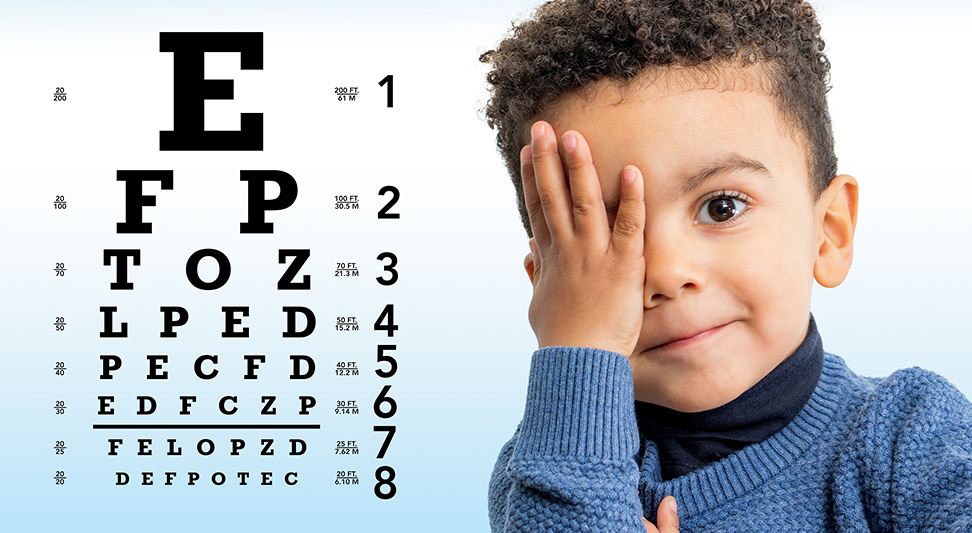As we step into the new school year, paying attention to children’s eye health is essential. This August, coinciding with Children’s Eye Health & Safety Month, we are reminded of the significance of vision and eye care for our young ones. Prevent Blindness, a non-profit organization committed to preserving sight, took the lead by providing free resources such as fact sheets, webinars, and toolkits to educate the public about children’s eye health.
The Importance of Children’s Eye Health & Safety Month
Since its establishment in 1908, Prevent Blindness has been dedicated to preventing blindness and preserving sight. During Children’s Eye Health and Safety Month, Prevent Blindness and other organizations focusing on childhood vision aim to promote awareness about healthy vision, early detection and treatment of potential vision issues, and the prevention of eye injuries in children. By offering valuable resources, they empower parents, caregivers, educators, and healthcare professionals to prioritize and promote children’s eye health.
Why Vision Skills Are Crucial for Students
Vision plays a pivotal role in a child’s development, academic success, and overall well-being. About one in four children face vision problems, which can lead to eye strain, headaches, and fatigue, affecting their ability to learn effectively.
Approximately 80% of information is presented visually in a classroom setting, making good eyesight critical for learning. Surprisingly, 60% of children with learning disabilities also have undetected vision problems.
It’s essential to understand that good vision extends beyond 20/20 eyesight and includes various vision-specific abilities like eye tracking, eye focusing, eye teaming, hand-eye coordination, visual perception, and visual acuity.
Identifying Potential Vision Problems in Children

As parents, caregivers, or educators, being aware of warning signs that may indicate vision problems in children is vital. The following behaviors could indicate vision problems.
- Holding books too close
- Squinting
- Rubbing eyes frequently
- Light sensitivity
- Poor hand-eye coordination
- Difficulty retaining information from reading
- Complain about headaches while using digital devices
Children displaying one or more of those behaviors may be suffering from one or more of the most common eye conditions in school-aged children, including:
- Hyperopia (farsightedness) – clearer vision of faraway objects than objects that are near.
- Myopia (nearsightedness) – clearer vision of nearby objects than objects at a distance.
- Astigmatism – imperfection in the curvature of the cornea, leading to blurriness of vision.
- Amblyopia (lazy eye) – decreased eyesight in one due to abnormal visual development early in life.
- Strabismus (crossed eyes) – a condition in which one eye is turned in a different direction than the other.
- Pediatric cataracts – cloudiness in the eye’s lens that affects the passage of light to the retina and causes blurred vision.
- Epiphora (childhood tearing) – excessively watery eyes.
Fortunately, the majority of vision problems experienced by school-age children are routine refractive errors that eye doctors can easily treat with corrective lenses. When patients reach adulthood, LASIK, EVO ICL, and lens replacement are popular options for correcting refractive errors.
Schedule your FREE nJoy Vision LASIK Consultation
Or call
(405) 842-6060
The Importance of Comprehensive Eye Examinations

A child’s vision can change without notice, especially during their formative years in school. Children should receive annual comprehensive eye exams performed by a trusted optometrist to detect and treat eye disorders and vision problems early on.
While vision screenings provided by schools and other services are valuable, they are often limited in their focus on visual acuity and eye alignment. Comprehensive eye exams with pupil dilation allow eye doctors to see a clearer picture of the child’s eye health.
If advised by a health care or childcare professional, or if warning signs are present, scheduling an eye exam with an optometrist is crucial. Children with specific medical conditions or risk factors for eye problems should also undergo regular eye check-ups.
Eye Health Tips for Students
In addition to regular screenings and exams, students can adopt simple practices to reduce eye strain and discomfort.
- Take regular breaks from screens and devices to rest their eyes.
- Blink regularly.
- Adjust brightness and contrast settings on screens and devices.
- Practice good hygiene, such as frequent handwashing and minimal eye touching, to prevent eye infections.
- Follow cleaning and wearing guidelines for contact lenses and eyeglasses.
- Make sure eyeglasses fit properly.
- Have a pair of backup eyeglasses in case one pair gets lost or damaged.
- Avoid sharing cosmetics to minimize the risk of eye infections.
- Spend time outdoors while wearing UV-blocking sunglasses.
- Wear proper protective eyewear for sports and other activities.
As we celebrate Children’s Eye Health and Safety Month, let’s prioritize our kids’ eye health, ensuring they have the best possible chance for success in their academic and extracurricular endeavors.
To explore more insights and info on children’s eye health, Prevent Blindness has all the resources and information you need to take care of your child’s vision and eye health from infancy to adulthood.

